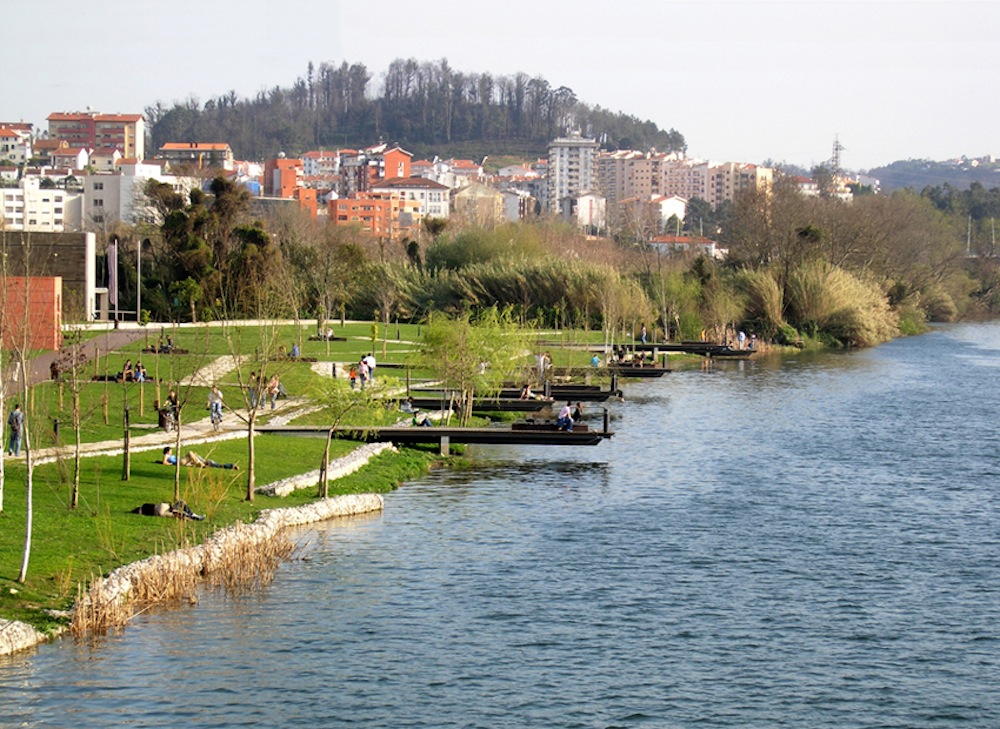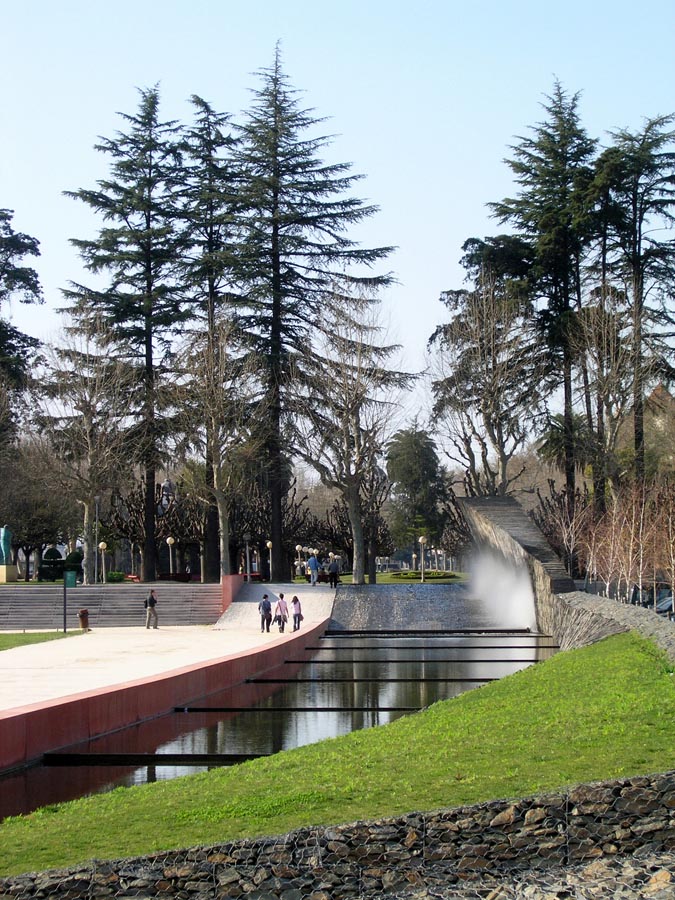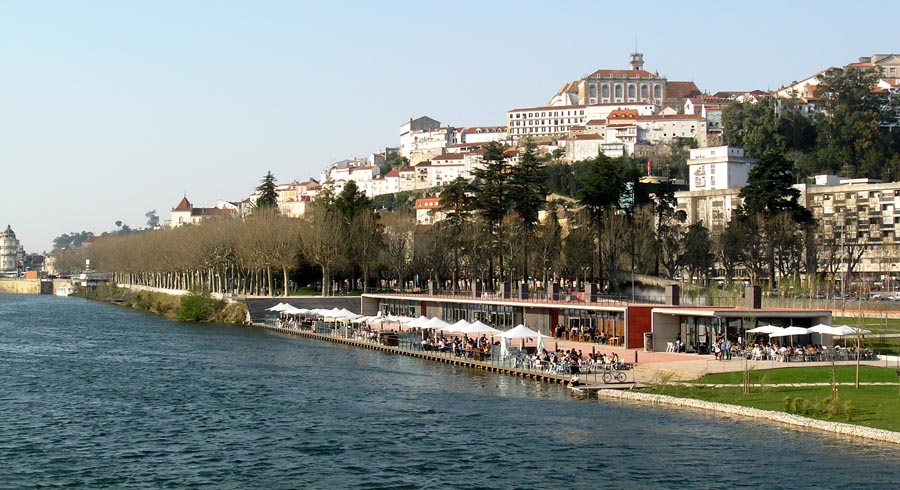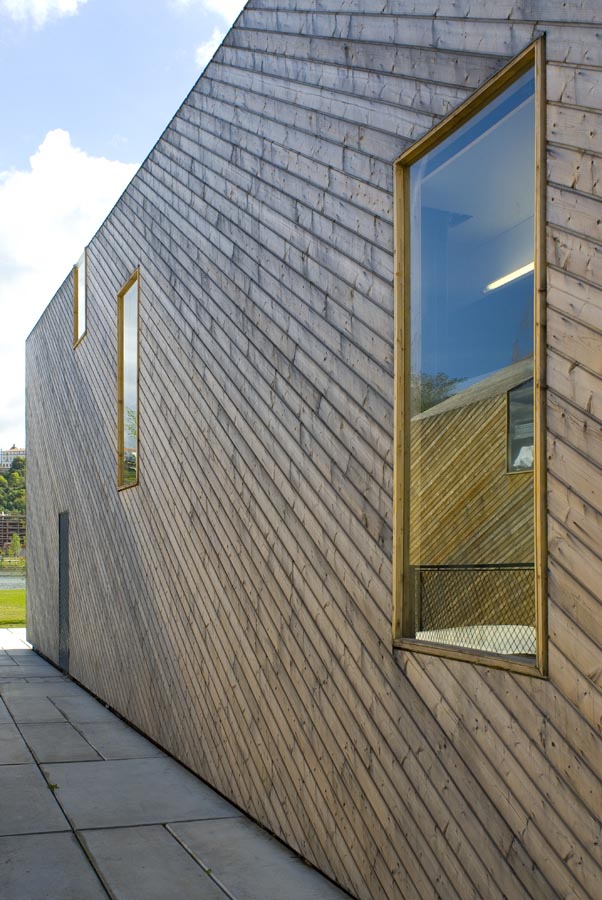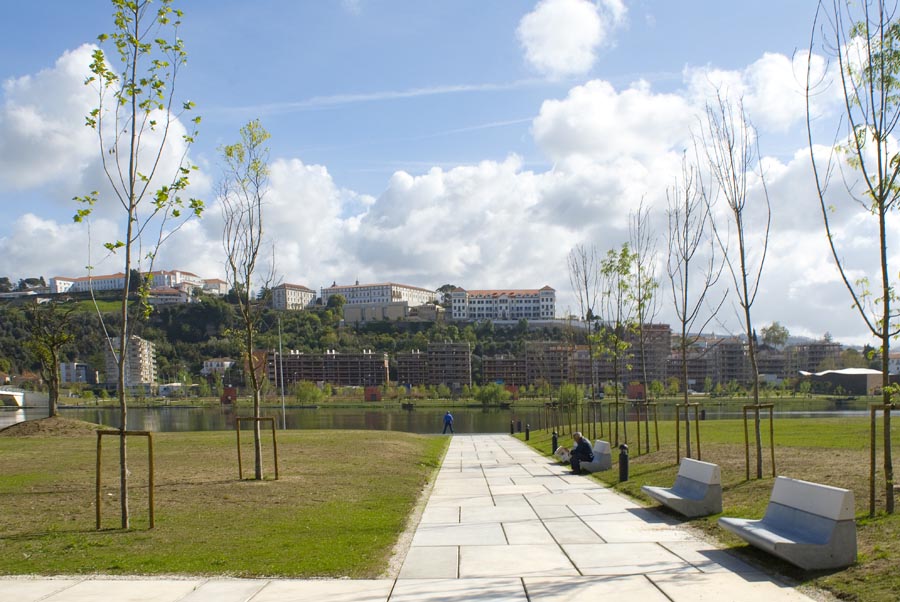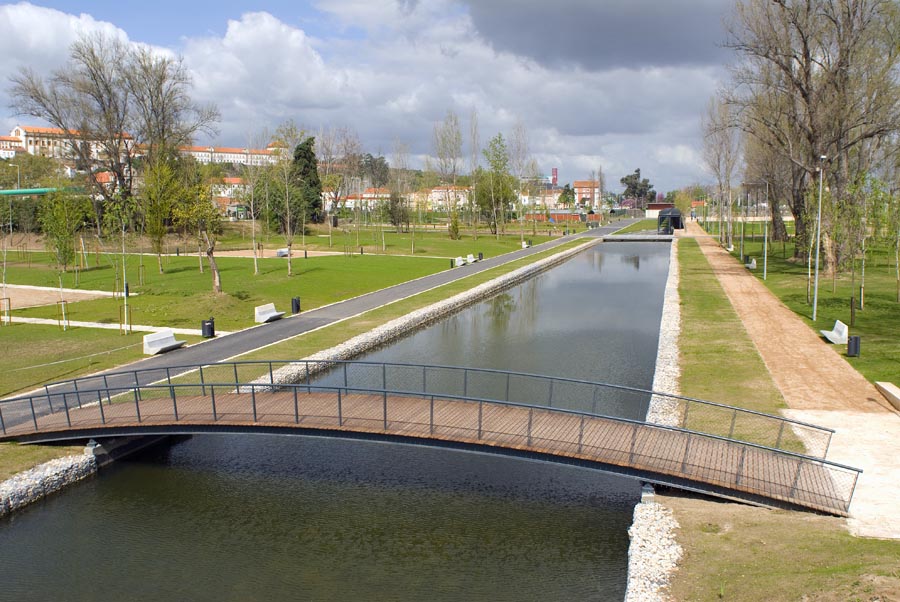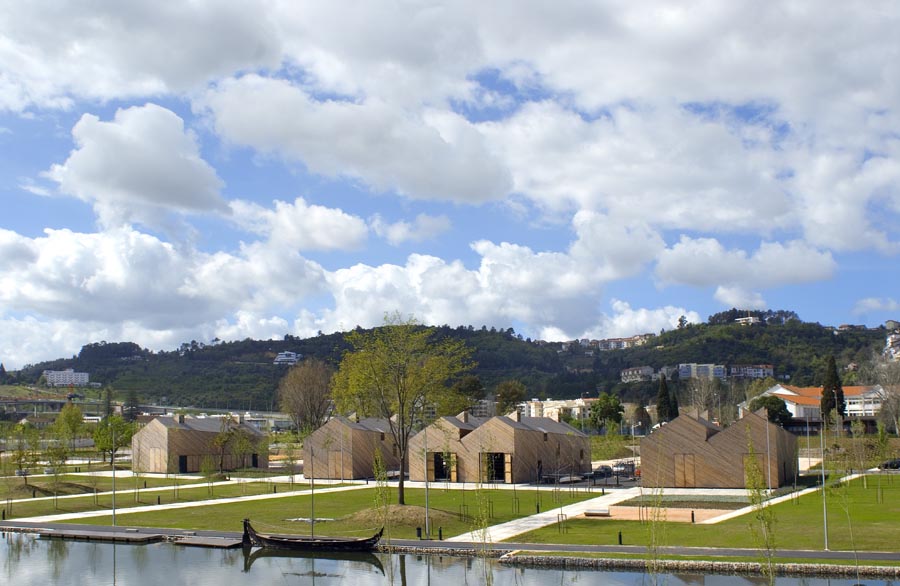Previous state
Not long ago, the River Mondego was channelled in the reach that passed through Coimbra. Dams constructed upstream have made its course more stable but, for centuries, frequent flooding obliged the city to keep strips of land on both banks free of any construction. Nevertheless, despite this precautionary measure, the monastery of Santa Clara-a-Velha was built too close to the left bank in the fourteenth century and the monks ended up abandoning it after three centuries. More cautious were the aristocracy and the rest of the clergy who, from the Middle Ages onwards, avoided the dangers of the river by occupying the Cidade Alta zone on top of a hill, while the Cidade Baixa, settled by craftsmen and tradesmen, spread out on the plain below.Also built on the hill was the University of Coimbra which, after being shifted back and forth between Lisbon and Coimbra, was eventually given its definitive location in the Cidade Alta in 1537. Today it is one of Europe’s oldest universities and, with over twenty thousand students, is the main focus of activity in Coimbra. This is manifest in the Queima das Fitas, a hundred-year-old “ribbon-burning” graduation party that fills the city with concerts and different kinds of shows for more than a week every year. Outstanding in the university’s legacy to Coimbra are the Joanina Library, the Science Museum and the Botanical Gardens. Founded in 1772, these gardens occupy the Ursulines Valley at the bottom of the hill’s southern slope, spreading through a good part of the land dropping down to the right bank of the River Mondego. It is separated from the water by a two-hundred-metre-wide strip where until recently, apart from a nineteenth-century romantic garden, there were only abandoned orange groves. On the left bank, the strip of land along the river that could not be used for building was similarly neglected. Besides the archaeological site of the Santa Clara-a-Velha monastery, which has been open to the public since it was excavated at the beginning of this century, this land was only used for open-air car parking and occasionally as fairgrounds.
Aim of the intervention
Stabilising the course of the River Mondego made it possible for the Coimbra City Council to consider renovating the vacant strips on each bank of the river, making them available to the citizens as consolidated public spaces that are open to everyone. To this effect, entries were called for in a public competition organised in 1994 with a view to selecting a project in which to invest almost twenty million euros in recovering the twenty-three hectares of riverfront land.Description
The intervention has created parks on both banks of the River Mondego, opposite each other and joined by a new bridge for cyclists and pedestrians. The park on the right bank is an extension of the pre-existing romantic garden, slotting into its main axis by means of a ramp and a wide wooden stairway. These two facilities surmount the difference in level between the nineteenth-century garden that was planted on high ground to escape the floods and the new park introduced at water level now that the river’s flow has been stabilised. A fountain has been built into a slate wall that runs alongside the ramp and longitudinally through the park to hide the open-air car park. The stairway descends to a wooden platform located next to the water and occupied by a series of red concrete pavilions with bars and restaurants plus terraces. An asphalted footpath giving continuity to the eastern end of the footbridge crosses the park diagonally accompanied by four cubic pavilions in glass and concrete. Cutting through it are several perpendicular tracks that end as projections over the river to form fishing places and points from which to enjoy tangential views of the river bank.On the left bank, close to the remains of the Santa Clara-a-Velha monastery, a large covered stage has been erected as a venue for the more crowded events of the Queima das Fitas festivities. A navigable canal runs diagonally through the park, bordered by two tree-lined paths and crossed by two footbridges. On the western side are wooden pavilions that are used for storing small boats.
Assessment
The instability of the River Mondego that had kept Coimbra at a distance for centuries has turned out to be a sort of saving in the form of protecting land that would otherwise have been quite desirable in terms of voracious urban growth. Now, the project of containing the river has offered the city the chance of using this land for its expansion. With the Mondego Park, Coimbra has made the most of this opportunity in a coherent, orderly fashion. The new park brings the green mass of the Botanic Gardens down to the water’s edge while also extending the setting of such a deep-rooted tradition as the Queima das Fitas all the way to the left bank. Elements like the navigable canal, the platform at water level, or the projecting points for fishing celebrate the river’s docility and make the most of the opportunity to spread out to, and even over it.David Bravo Bordas, architect
[Last update: 02/05/2018]


